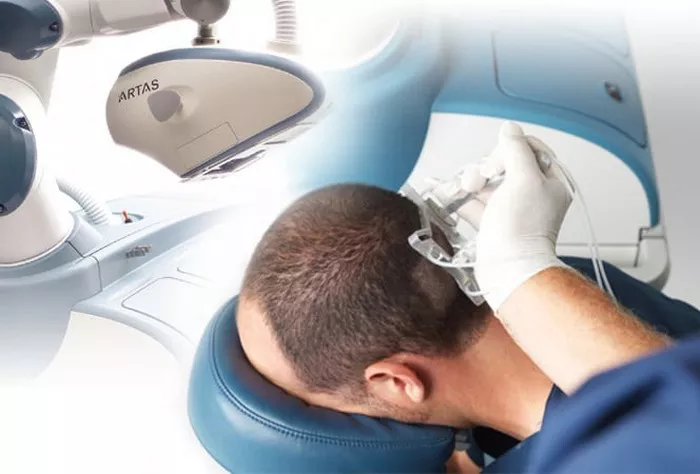Hair transplantation is a life-changing procedure that offers natural-looking results and a boost in confidence for individuals dealing with hair loss. While the results can be transformative, the recovery process is equally important. One of the most common questions among patients is when they can return to their normal sleeping habits, including sleeping on their stomach. This article provides a detailed guide based on expert advice and real-life experiences to help you navigate your recovery and ensure the best possible outcomes.
Introduction to Hair Transplant Recovery
Hair transplantation involves surgically moving hair follicles from one part of the scalp (the donor area) to another part (the recipient area). The procedure is typically performed under local anesthesia and can take several hours, depending on the number of grafts being transplanted. Recovery is a crucial phase that requires careful attention to ensure the best possible outcomes.
Why Sleeping on Your Stomach Is Not Recommended Initially
Sleeping on your stomach can put significant pressure on the scalp, which is particularly sensitive and vulnerable after a hair transplant. This pressure can dislodge the newly implanted hair follicles, leading to poor results and potential complications. Therefore, it is essential to follow specific guidelines to ensure the transplanted area heals properly before resuming your normal sleeping habits.
Immediate Post-Transplant Period (0-2 Weeks)
Sleeping Position
- Elevated Position: For the first two weeks after the procedure, it is recommended to sleep in an elevated position. Use pillows to elevate your head and upper body to about 30-45 degrees. This helps reduce swelling and minimizes the risk of pressure on the transplanted area.
- Avoid Lying Flat: Avoid lying flat on your back or side, as this can put pressure on the scalp and potentially dislodge the grafts.
- Absolutely No Stomach Sleeping: Do not sleep on your stomach during this period. The pressure on the scalp can be detrimental to the healing process.
Swelling and Discomfort
- Swelling: Swelling is common in the first few days and can extend to the face, particularly around the eyes. Elevating your head can help reduce swelling.
- Discomfort: Some patients may experience mild discomfort or itching. Over-the-counter pain relievers and anti-inflammatory medications can help manage these symptoms.
Early Recovery Period (3-4 Weeks)
Gradual Return to Normal Sleeping Positions
- Continued Elevation: Continue to sleep in an elevated position for the first four weeks. Gradually reduce the elevation as you feel more comfortable, but avoid lying flat until the second week.
- Soft Pillow: Use a soft pillow to minimize pressure on the scalp. Avoid hard surfaces that can cause discomfort or dislodge the grafts.
- No Stomach Sleeping Yet: Continue to avoid sleeping on your stomach. The scalp is still sensitive and vulnerable to pressure.
Post-Operative Care
- Scalp Cleaning: Follow your surgeon’s instructions for cleaning the scalp. Gentle cleansing with a mild shampoo can help prevent infection and promote healing.
- Avoid Scratching: Resist the urge to scratch or touch the transplanted area, as this can damage the grafts.
Mid-Recovery Period (5-8 Weeks)
Transition to More Normal Sleeping Habits
- Reduced Elevation: By the fifth week, you can gradually transition to a more normal sleeping position. However, it is still advisable to avoid lying flat and to use a soft pillow for support.
- Monitor for Discomfort: Pay attention to any discomfort or unusual sensations. If you experience significant pain or swelling, contact your surgeon for advice.
- Still No Stomach Sleeping: Continue to avoid sleeping on your stomach. The scalp is still healing, and pressure can still be harmful.
Long-Term Recovery (9-12 Weeks and Beyond)
Full Return to Normal Sleeping Habits
- Consult Your Surgeon: Before resuming stomach sleeping, consult your hair transplant surgeon. They will assess the healing progress and provide personalized guidance based on your specific situation.
- Gradual Reintegration: Once cleared by your surgeon, gradually reintroduce stomach sleeping. Start with short periods and monitor for any discomfort or adverse effects.
- Use a Soft Pillow: Even after you are cleared to sleep on your stomach, use a soft, hypoallergenic pillow to minimize pressure and ensure comfort.
Tips for a Comfortable Night’s Sleep
Use a Soft Pillow
- Comfort and Support: Invest in a soft, hypoallergenic pillow to provide comfort and support while minimizing pressure on the scalp.
Create a Cool Environment
- Temperature Control: Ensure your bedroom is cool and well-ventilated to reduce sweating and discomfort. Sweating can lead to increased swelling and discomfort.
Avoid Alcohol and Caffeine
- Hydration and Relaxation: Avoid alcohol and caffeine, which can disrupt sleep and increase swelling. Stay hydrated and consider relaxation techniques, such as meditation or deep breathing, to help you fall asleep more easily.
Use a Sleep Mask
- Protect Your Eyes: If you experience swelling around the eyes, consider using a sleep mask to reduce light exposure and provide additional comfort.
Conclusion: When Can I Sleep on My Stomach After a Hair Transplant?
In conclusion, returning to normal sleeping habits, including sleeping on your stomach, after a hair transplant is a gradual process that requires patience and adherence to post-operative care instructions. For the first two weeks, sleep in an elevated position to reduce swelling and avoid putting pressure on the scalp. Gradually transition to a more normal sleeping position over the first four weeks, and continue to avoid sleeping on your stomach until at least the ninth week. By following these guidelines and listening to your body, you can ensure a smooth and successful recovery, leading to the best possible results from your hair transplant.
- Restoring Confidence: Understanding Hairline Transplants
- Can Anyone Get a Hair Transplant?
- When to Start Finasteride After a Hair Transplant?


